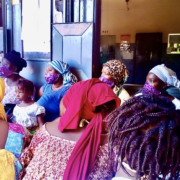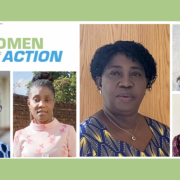Shifting Gender Norms in East and Southern Africa: Insights from Peers in Social and Behavior Change for Family Planning and Reproductive Health
Addressing social and gender norms is crucial to achieving sustainable change the field of family planning (FP) and reproductive health (RH). Deeply rooted norms often influence individuals’ access to services and decision making around their health and well-being. However, changing them requires a nuanced and context-specific approach. We have harvested insights from a series of Learning Circles events focused on addressing social and gender norms in social and behavior change (SBC) for FP/RH programming.
A Collaborative Learning Experience
Knowledge SUCCESS’s Learning Circles approach fostered an interactive environment where SBC practitioners exchanged insights and experiences related to FP/RH programming. Held virtually in May and June 2024, these sessions engaged 35 participants from 10 countries: Burundi, Ethiopia, Kenya, Malawi, Rwanda, Somalia, South Sudan, Tanzania, Uganda, and Zimbabwe. Most participants were experienced in SBC for FP/RH programs and offered a wealth of diverse perspectives. The program design allowed them to share best practices, explore challenges, and collaboratively develop actionable solutions for shifting harmful norms that limit access to and use of FP/RH information and services.
Key Insights
- Harness the Influence of Local Leaders to Challenge Harmful Social and Gender Norms in FP/RH

Engaging local leaders helps stakeholders challenge entrenched social and gender norms, especially in FP. Persuading influential community and religious leaders to advocate for normative change requires aligning with shared goals such as family well-being and community development. Programs should involve these leaders in co-creating messages that emphasize how gender equality and FP helps families be healthier. Framing FP as a “family wellness” issue motivates leaders to become advocates, particularly when they receive positive feedback from their communities.
Example: In South Sudan, a program addressed the underreporting of gender-based violence (GBV) by engaging male community and religious leaders to shift harmful norms which devalue girls who have been raped. Project staff and community leaders co-developed culturally sensitive messages emphasizing the health benefits of confidential GBV services, such as preventing sexually transmitted infections. They reassured parents reporting would not harm a girl’s marriage prospects. By aligning the intervention with community priorities like family well-being, the program successfully increased GBV reporting and treatment, with male leaders championing the cause and helping normalize access to essential health services.
- Engage Men to Promote Shared Responsibility in FP and Household Care

Traditional gender norms often perpetuate inequality and power imbalances, limiting men’s involvement in reproductive, maternal, and newborn health. These norms also contribute to violence and an unequal division of care responsibilities. Addressing these issues depends on engaging men as active partners in challenging these norms and fostering more equitable relationships. Involving men in FP encourages shared responsibility, open communication, and greater support for women’s reproductive choices. Culturally sensitive approaches, male role models, and community engagement are proven strategies to drive change. Additionally, targeted education, workplace programs, and male-friendly services ensure men are informed and included. Framing FP as a contributor to household economic stability, not just health, can enhance its appeal.
Example: In Rwanda, the Bandebereho program implemented by the Rwanda Men’s Resource Center (RWAMREC)addresses GBV, empowers women in financial decision making, and improves child care practices, responding to challenges such as high rates of spousal violence, limited financial autonomy for women, and inadequate child supervision. The program engages men by using fatherhood as an entry point for discussions on gender equality, promoting shared caregiving and household responsibilities. Through participatory sessions led by community health workers, men and their partners reflect on gender norms and improve communication, fostering mutual respect. This approach reduces intimate partner violence, increases male involvement in maternal and child health, and promotes more equitable, violence-free households. The program’s community-based model and focus on violence prevention have created lasting change.
- Integrate FP Services into Community Activities to Reduce Stigma and Shift Gender Norms

Integrating FP/RH services into everyday community activities is an effective strategy for challenging and transforming harmful social and gender norms. These norms often inhibit open discussions about RH, reinforce the belief that FP is solely a woman’s responsibility, and stigmatize young people—especially girls—who seek sexual and reproductive health (SRH) services. Integrating FP/RH services into non-health-related settings, such as sports or community events, normalizes conversations around SRH, making services more accessible while reducing the stigma associated with them. This community-driven approach, supported by strong mobilization efforts, promotes shared decision making, encourages male involvement, and aligns FP/RH messaging with local cultural values, fostering more equitable participation in health decisions.
Example: In western Kenya, the Sports for Change program involves young men and adolescents in SRH discussions, traditionally seen as a woman’s responsibility. By integrating SRH education and FP/RH services into sports tournaments, the program not only reduces stigma—particularly for girls—but also encourages shared responsibility in health decision making. Youth champions lead learning sessions before matches, delivering tailored SRH messages to different age groups. This has increased the uptake of FP services and engaged adolescents in SRH discussions. Health services such as HIV testing, FP, and human papillomavirus vaccines are provided during these events, further improving access to care.
- Center Community Voices in SBC for FP/RH Programs to Drive Normative Change

Sustainable normative change requires the active involvement of the community at every stage of the program—from design to implementation. Communities play a role in reinforcing both positive and negative norms, making their participation essential for developing effective, norm-shifting interventions. Programs must engage community members in co-creating solutions, provide spaces for critical reflection, and involve influential leaders to foster new, positive norms.
Example: In Uganda, gender norms traditionally restricted women to caregiving roles, excluding them from public decision making. The Heroes for Gender Transformative Action implemented by Amref Health Africa, Cordaid, and MIFUMI tackled this issue by encouraging women’s participation in county-level budgeting through community dialogues and planning sessions. These sessions provided the platform for women to be actively involved in the budgeting process. As a result, women influenced health plans by advocating for including FP/RH services, helping shift the societal norm that limited their roles to the domestic sphere.
- Use Ongoing Feedback to Monitor and Adapt Programs for Normative Change

Continuous monitoring and feedback can assess whether interventions are shifting social norms—though progress may be difficult to measure in the short term–and quickly identify any unintentional consequences, such as community backlash. Proxy or indirect indicators can be a helpful starting point. Typically, proxy or indirect indicators focus on changes in attitudes, intentions, and behaviors/behaviors. For example, a proxy attitudinal indicator for a program interested in reducing the frequency of child, early, and forced marriages might monitor percent of respondents who agree that adolescent girls under the age of 18 should be allowed to marry. Flexibility in programming allows SBC practitioners to address emerging challenges and refine their strategies to maximize impact.
Example: In Ethiopia, a GBV prevention program initially struggled with low community engagement due to cultural norms that discouraged reporting. Through continuous monitoring and community feedback, the program identified confidentiality concerns as a major barrier. In response, they adapted their strategy by launching awareness campaigns ensuring confidentiality and emphasizing the health benefits of early reporting. As new challenges arose, such as mistrust in health care providers, the program remained flexible by training providers and establishing confidential reporting mechanisms. This responsive approach led to increased GBV reporting and service utilization, effectively shifting harmful norms around GBV in the community.
Looking Forward
Addressing social and gender norms in SBC for FP/RH programming is a complex endeavor toward creating lasting, sustainable change. These insights underscore the value of engaging local leaders, developing culturally relevant messages based on the community’s values, integrating services into community activities, empowering youth, involving communities in every step, and staying flexible to adapt to emerging challenges. By incorporating these strategies, SBC practitioners can more purposefully address harmful social and gender norms and create more impactful and equitable FP/RH programs that meet the needs of diverse populations.
As we move forward, we encourage SBC practitioners to reflect on these insights and consider how to apply them in their specific contexts to enhance FP/RH programs. Staying connected and continuing to share insights and innovations also assures our collective success. Follow us on LinkedIn for ongoing updates and actionable strategies from the Learning Circles and explore our tools and resources—such as Getting Practical: Integrating Social Norms into SBC Programs, Gender Equality Check-in Tool, and Shifting Social and Gender Norms as Part of Social and Behavior Change course: Part 1 and Part 2, coming soon. Together, we can foster healthier, more equitable communities.
Written by: Lisa Mwaikambo, Knowledge Management Advisor

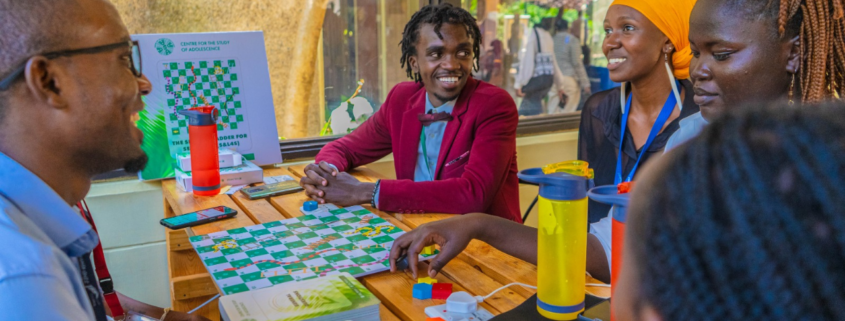 Dollarman Natse
Dollarman Natse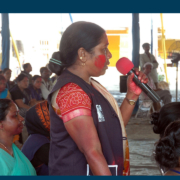 Gopal Bhattacharjee/Photoshare
Gopal Bhattacharjee/Photoshare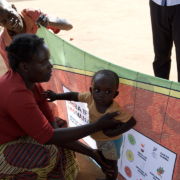
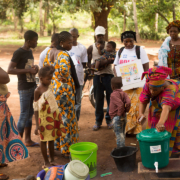 UNICEF Guinea
UNICEF Guinea
